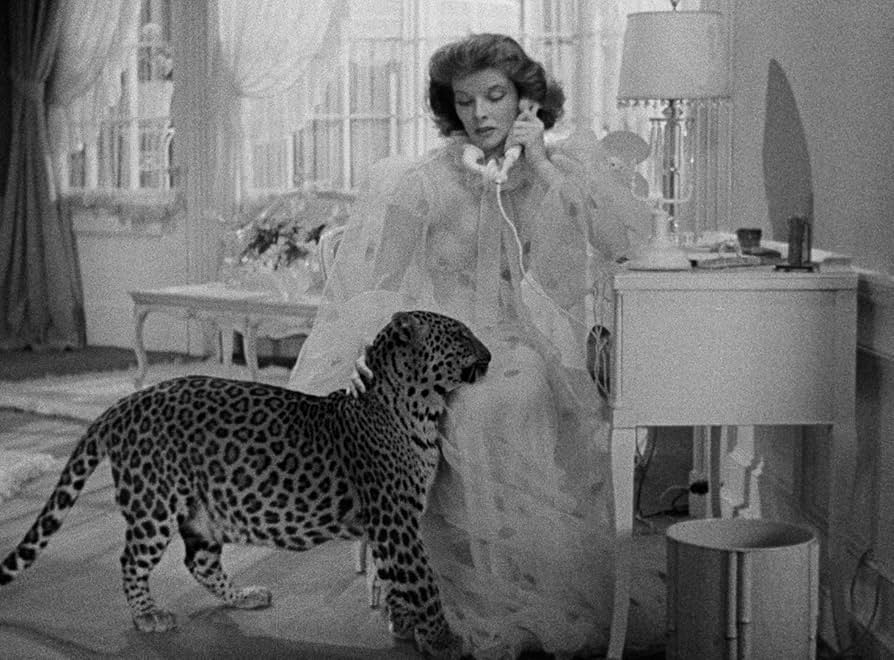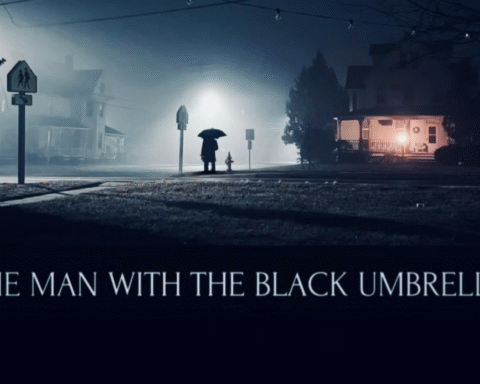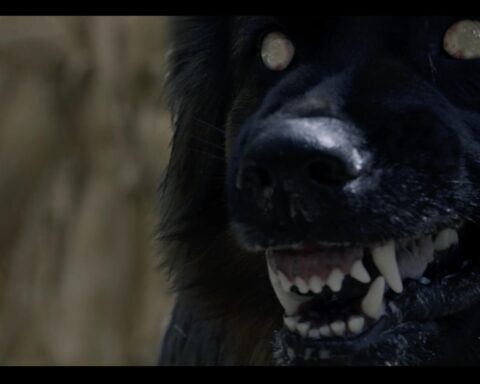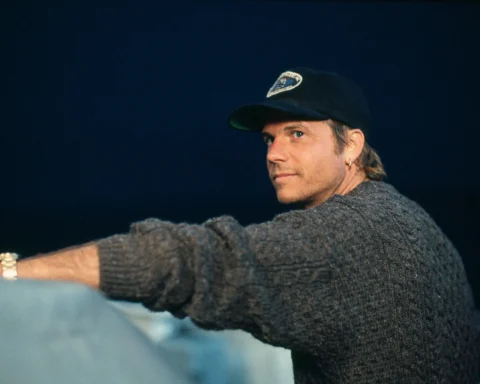“Bringing Up Baby,” released in 1938, stands as a quintessential example of the screwball comedy genre. Directed by Howard Hawks, the film stars Katharine Hepburn and Cary Grant, whose dynamic performances have cemented the movie’s status as a timeless classic. At its core, “Bringing Up Baby” is a masterful blend of rapid-fire dialogue, improbable situations, and slapstick humor, which together create an enduring cinematic experience.
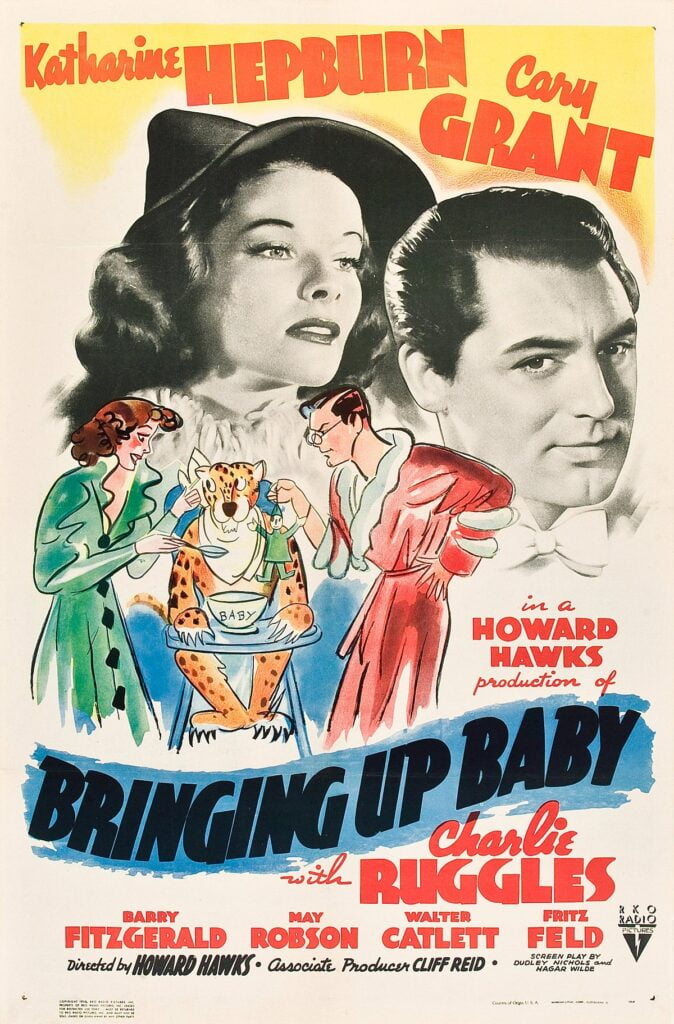
An Eccentric Dance of Wit and Charm
“Bringing Up Baby” epitomizes screwball comedy, a genre characterized by its fast-paced, witty dialogue, and farcical situations. The film’s plot revolves around the misadventures of a paleontologist, Dr. David Huxley (Cary Grant), and a free-spirited heiress, Susan Vance (Katharine Hepburn), who brings chaos into his meticulously ordered life. The narrative unfolds with a leopard named Baby, a series of misunderstandings, and a relentless series of comic mishaps. Hawks’ direction ensures that the film’s pace never falters, with each scene contributing to a crescendo of comedic brilliance.
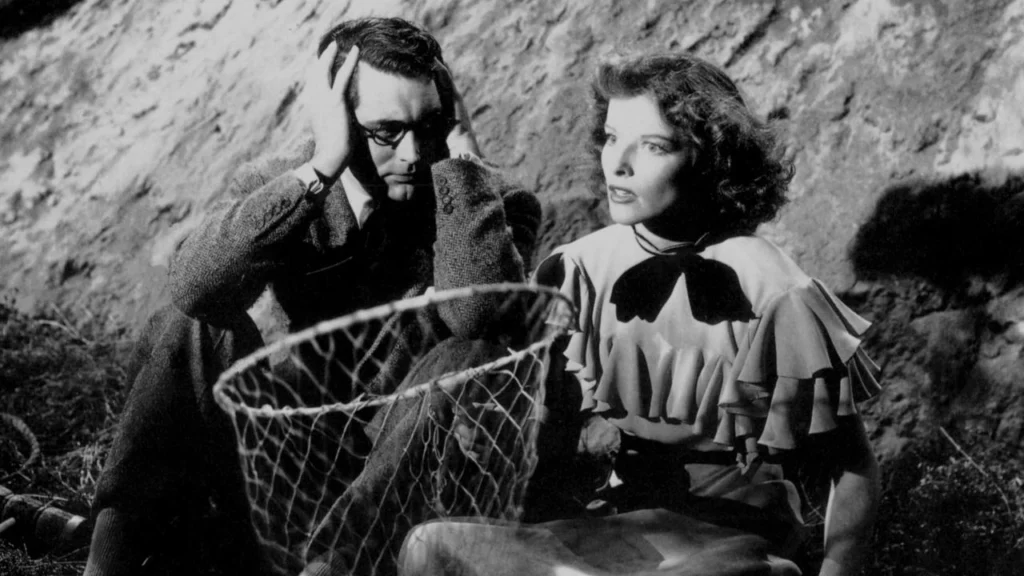
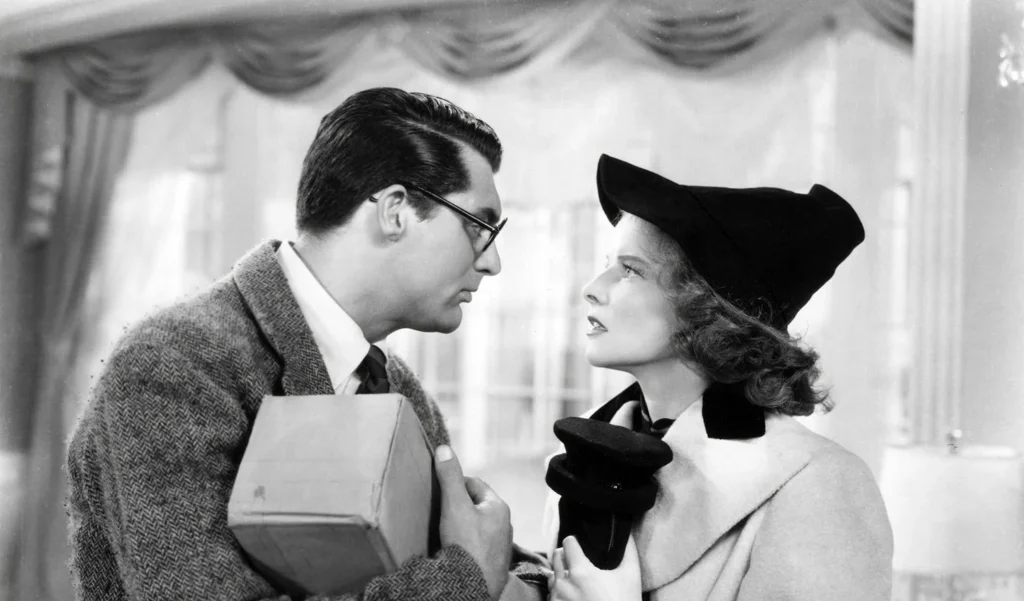
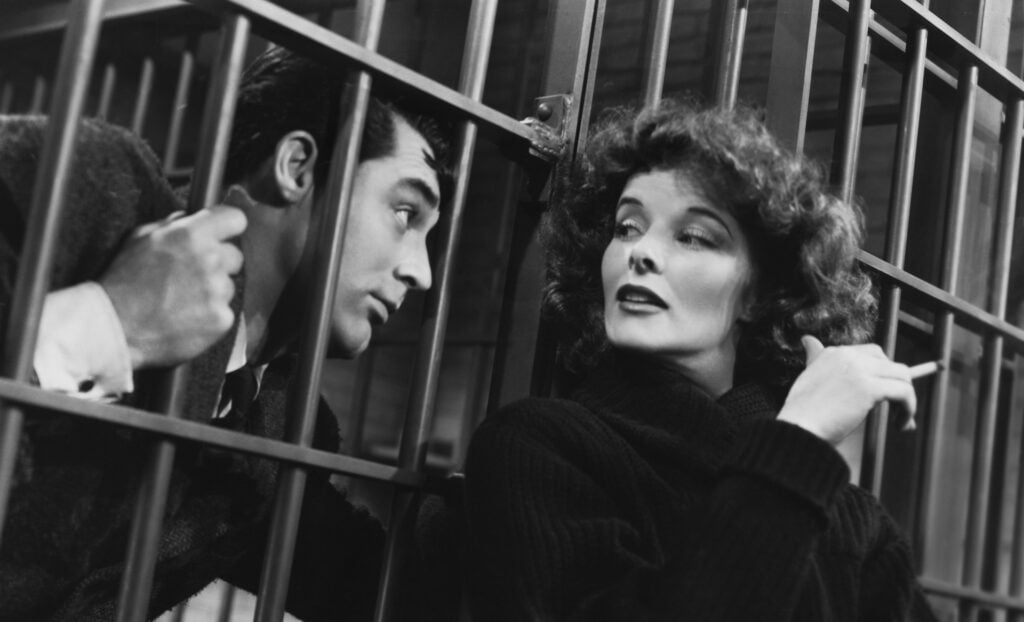
A Spirited Symphony of Eccentric Elegance
Katharine Hepburn’s portrayal of Susan Vance is nothing short of revolutionary. At the time, Hepburn was struggling to establish herself as a leading actress, having been labeled “box office poison” after a series of commercial failures. However, “Bringing Up Baby” showcased her comedic talent in a way that previous films had not. Hepburn’s performance is a study in controlled chaos; her ability to balance Susan’s eccentricities with charm and vulnerability makes her character both exasperating and endearing.
Hepburn’s comedic timing is impeccable. Her rapid exchanges with Grant, laden with double entendres and playful jabs, reveal her sharp intellect and command over the material. Moreover, Hepburn’s physical comedy – whether she’s struggling with Baby the leopard or causing a series of accidents – highlights her versatility and willingness to subvert the traditional expectations of a leading lady.
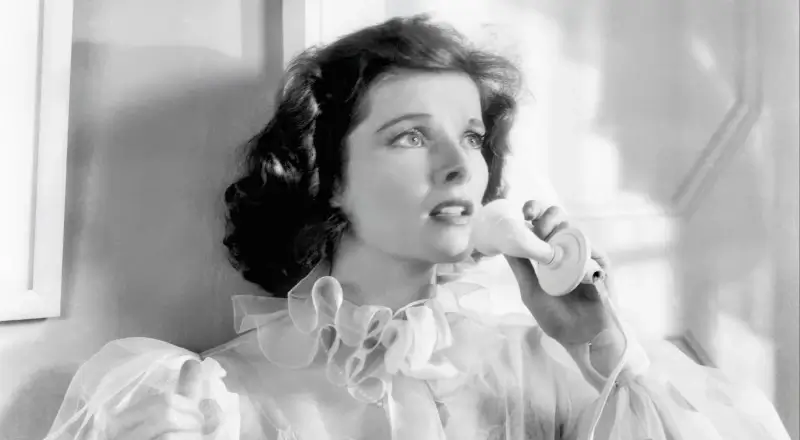
Phoenix of Laughter: Hepburn’s Radiant Rise
Katharine Hepburn’s career is marked by her unwavering commitment to roles that defied the norms of her time. “Bringing Up Baby” was a significant departure from the demure and glamorous portrayals expected of female stars in the 1930s. Hepburn’s Susan Vance is unapologetically unconventional; she is a woman of action, often driving the plot forward through her impulsive decisions. This role was a precursor to Hepburn’s later work, where she frequently portrayed strong, independent women who challenged societal norms.
Hepburn’s ability to transcend genre boundaries and her insistence on complex, multifaceted characters have left an indelible mark on Hollywood. Her career spanned over six decades, during which she garnered four Academy Awards for Best Actress – a record that remains unbroken. “Bringing Up Baby” was instrumental in establishing Hepburn as a versatile actress capable of both dramatic and comedic excellence.
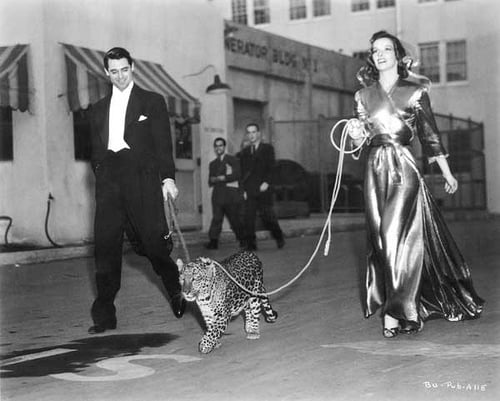
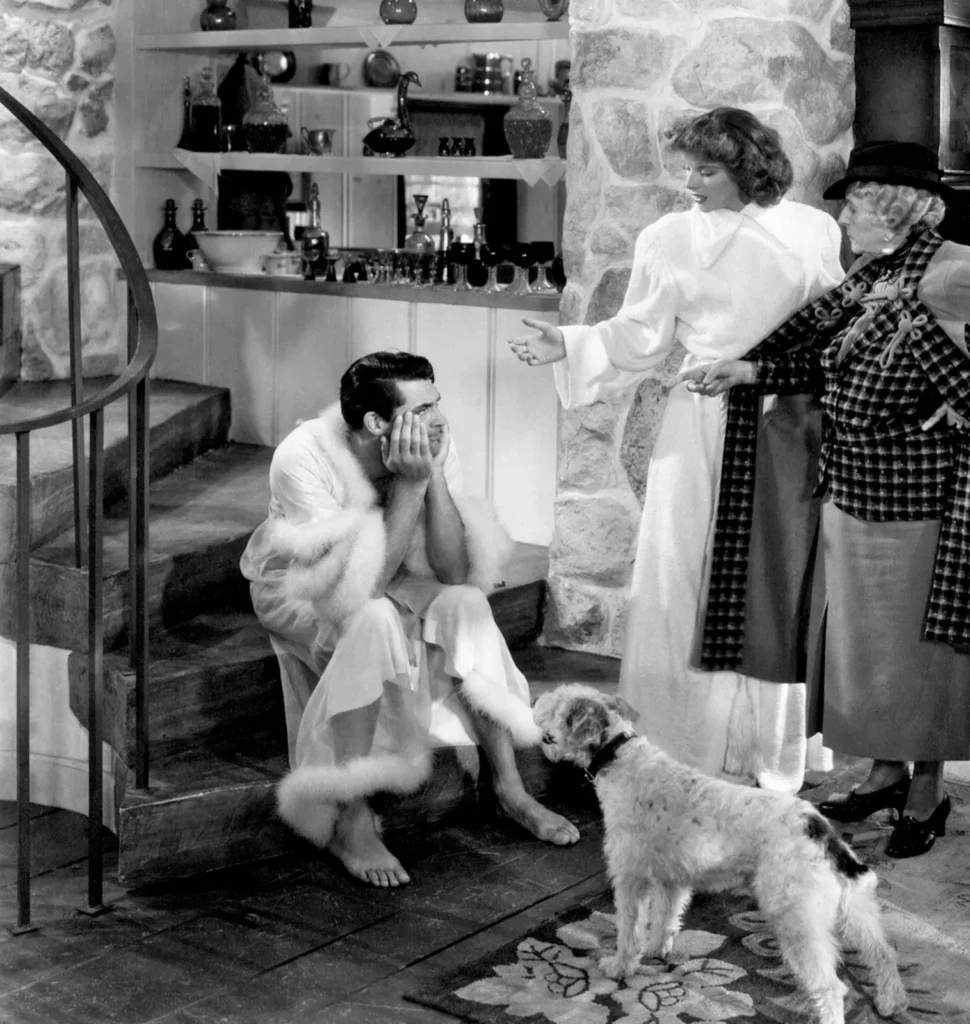
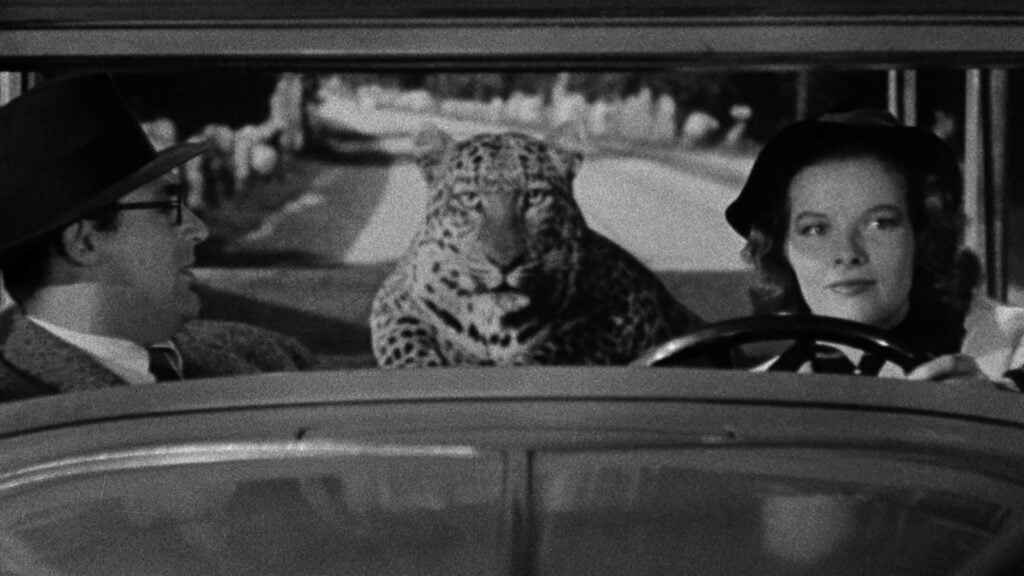
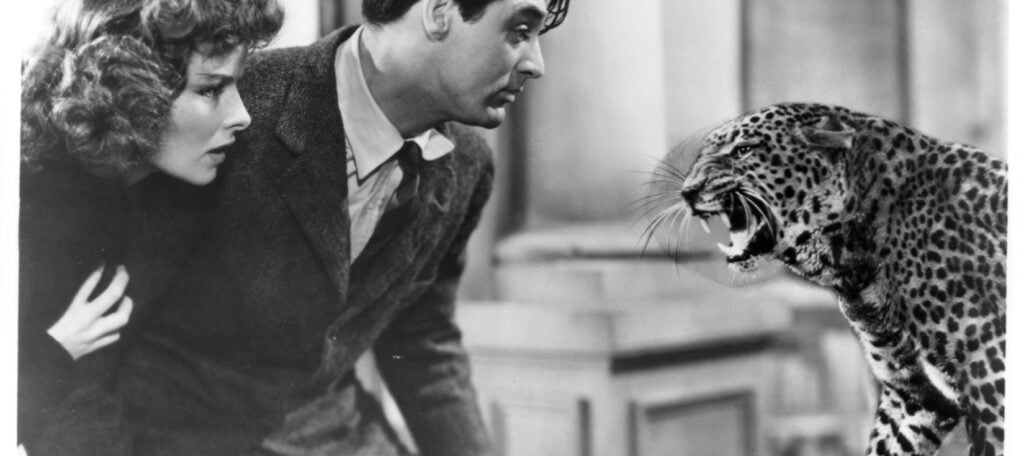
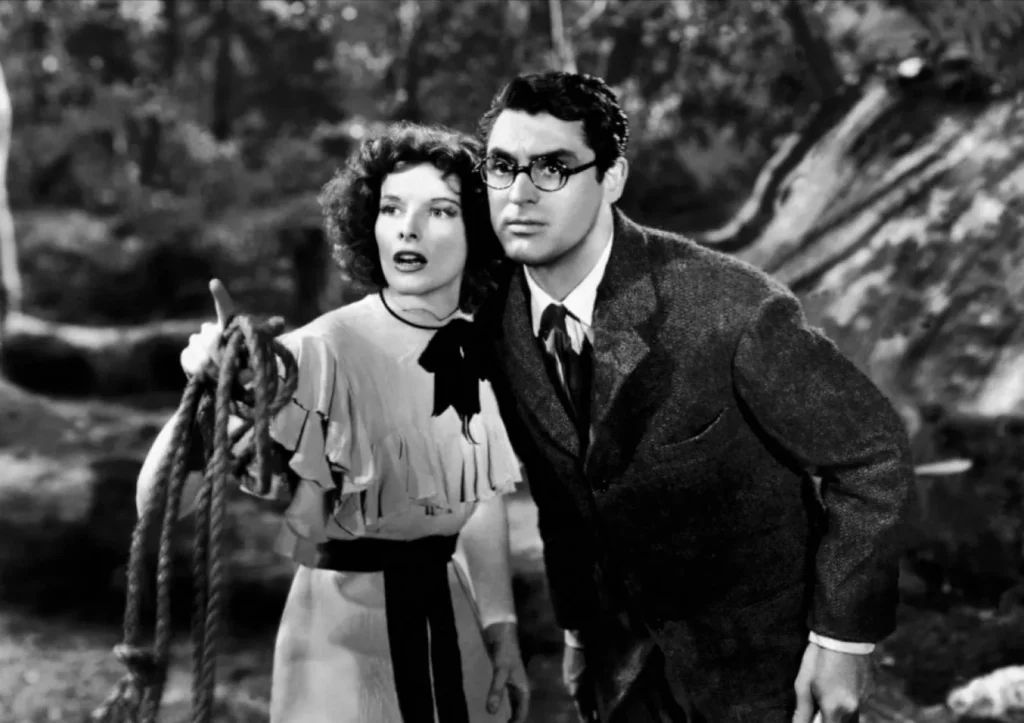
Timeless Tapestry of Merriment and Mischief
“Bringing Up Baby” endures as a classic for several reasons. Firstly, the film’s script, penned by Dudley Nichols and Hagar Wilde, is a masterclass in comedic writing. The dialogue is sharp, fast-paced, and layered with humor that appeals to both intellectual and visceral sensibilities. The film’s structure, which builds tension through a series of escalating comedic scenarios, is flawlessly executed.
Secondly, the chemistry between Hepburn and Grant is palpable. Their contrasting styles – Hepburn’s frenetic energy and Grant’s understated befuddlement – create a dynamic that is both engaging and hilarious. Their performances are perfectly synchronized, each playing off the other to enhance the comedic impact.
Additionally, Howard Hawks’ direction is crucial to the film’s success. Hawks had a unique ability to handle comedy with the same deftness as drama, ensuring that the film’s pacing and tone remained consistent. His use of long takes and fluid camera movements allows the actors’ performances to shine, emphasizing the physicality and timing that are essential to screwball comedy.
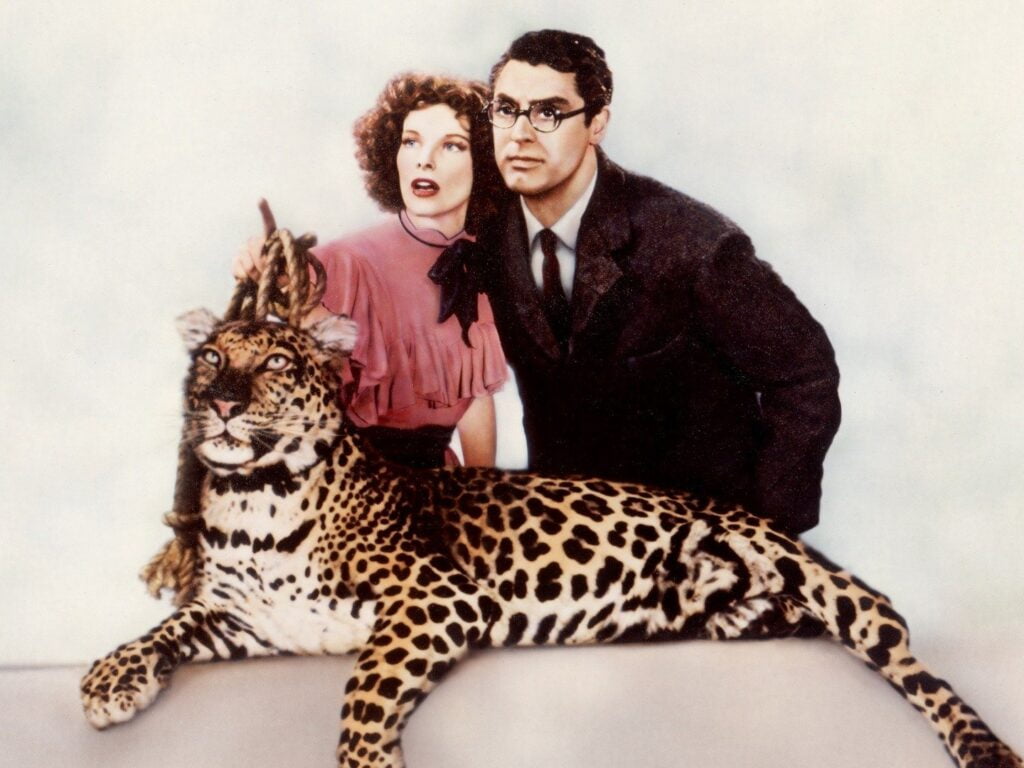
Classics Never Die
“Bringing Up Baby” remains a seminal work in the annals of American cinema, not only for its contribution to the screwball comedy genre but also for its role in reviving Katharine Hepburn’s career. Hepburn’s portrayal of Susan Vance is a testament to her talent and versatility, demonstrating her ability to navigate and elevate comedic material. The film’s enduring appeal lies in its perfect blend of sharp writing, stellar performances, and expert direction. As a result, “Bringing Up Baby” continues to be celebrated as a classic, reflecting the heights that Hollywood comedy can achieve.
